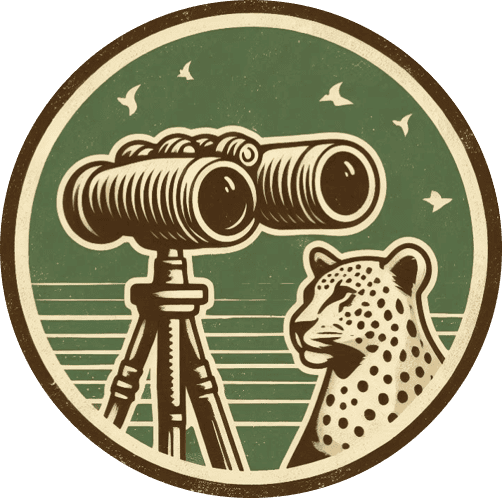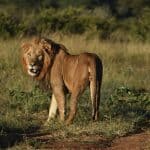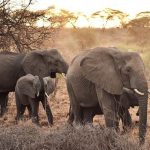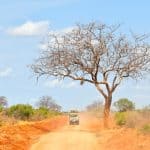The question of when to go on Safari is not a very straight forward question. In school, we learn about the four seasons, nice and simple. In reality, things are a little more complicated in Africa. Some places, like South Africa, do follow the traditional seasonal pattern (in reverse to Europe and America, of course). But even that isn’t a direct correlation. Its important to note though that the animals are there all year round, its just the experience you have finding them and viewing them that changes with the seasons.
If I were to explain all the seasons across Africa, with their unique pros and cons, this blog would quickly turn into a novel. So, for simplicity’s sake, let’s focus on Kenya. I’ll walk you through the key considerations for planning your safari: weather, crowds, wildlife movements (especially the Great Migration), and a little personal perspective from someone who’s been through them all.
Understanding Kenya’s Seasons
Forget summer and winter! In Kenya, we talk about wet and dry. And here’s where it gets a little trickier: there are two wet seasons and two dry ones.
- The Long Rains: Usually fall between late March and May. Expect heavy afternoon downpours, especially in April. Some remote parks become difficult to access during this time, and land cruisers getting stuck is a regular occurrence.
- The Long Dry Season: From June through October is arguably the best time to go on safari. Skies are clear, wildlife is easier to spot, and roads are more accessible.
- The Short Rains: Typically arrive in November and taper off by early December. These are lighter and more sporadic than the long rains, but they still impact travel and wildlife visibility.
- The Short Dry Season: Roughly from mid-December to early March. Still good weather, but hotter and with the risk of scattered rain showers toward the end.
Back in the day, these patterns were predictable down to the hour. My grandfather, a farmer, used to claim the rains would begin at 2:00 PM sharp on March 17th. He was rarely wrong. But thanks to climate change, things are no longer quite so precise. That said, the general seasonal rhythm still holds fairly well.
Why should I care about the weather?
It’s easy to overlook the weather when booking a safari, after all, the animals are always there, right? But trust me, the weather shapes everything about your experience.
First off, animal sightings are hugely impacted. During the dry season, vegetation thins out, and water becomes scarce. This means animals congregate around rivers, waterholes, and other reliable sources; this makes them easier to spot in the open. In contrast, the wet season brings lush greenery, which is beautiful, but it also gives wildlife plenty of hiding spots. You’ll still see animals, but you might have to work a little harder for it.

Then there’s the comfort factor. Heavy rains can mean muddy tracks, bogged-down 4x4s, and longer travel times between camps. On the flip side, the air is cooler and the landscapes are lush, dramatic and green.

Crowds are another thing. Peak dry season (July–October) and the December holidays bring more tourists, which means busier lodges and more vehicles around sightings, especially in the popular spots like the Mara. In the rainy months, you might have entire stretches of savannah to yourself, which has a sincerely special kind of feeling!
Lastly, photography. If you’re keen on snapping wildlife, weather plays a huge role. Dry seasons offer clear light and dust for dramatic sunsets. Wet seasons give you stormy skies, saturated greens, and newborn animals.

So yes, the animals don’t leave, but how, where, and when you see them can be transformed by the weather. Understanding the seasons means understanding your what your safari will bring for you.
School Holidays and Peak Travel Times
If you’re looking for peace and quiet in the bush, avoid the busiest times: July to early September, and the Christmas holidays in December. These coincide with school breaks in Kenya, the UK, and other parts of Europe, which means more people, higher prices, and busier parks — especially in the Mara.
If, however, you’re traveling as a family or want to experience the migration in full swing, these times may be exactly what you’re looking for, as they also align with some of the best game viewing across most of the parks. My suggestion though, is to make sure you book early, as the best accommodations fill up quickly!
The Dry Season: Classic Safari Conditions
Best for: wildlife sightings, clear skies, and incredible sunsets.
From June to October, Kenya’s long dry season offers perfect safari weather. The bush dries out, water sources shrink, and animals gather around rivers and watering holes. This makes wildlife spotting much easier: no long grass, no muddy roads.
It’s also the prime time for the Great Migration in the Mara. More on that shortly.
The short dry season from late December to March is also great, though it can be hotter and a little dustier. Parks are all accessible, wildlife is still plentiful, and the landscapes, especially after the short rains, are lush but open.
The Wet Season: Beauty, Bargains, and Mud
Best for: birding, dramatic skies, fewer crowds, and lower costs.
Yes, the rains make things a bit trickier, some roads turn to soup, and thick vegetation makes wildlife harder to spot. But there’s a different kind of beauty during the wet seasons. The landscape turns emerald green, baby animals are everywhere, and photographers will love the moody skies and softer light.
Importantly: prices drop, and with fewer tourists around, you’ll often feel like you have the entire park to yourself! So if you don’t mind a little rain and mud, the wet season can still be an incredible time to visit.
Maasai Mara Through the Seasons
The Mara is spectacular year-round, but timing your visit with the Great Migration is a once-in-a-lifetime experience.
- July to October: Peak migration. Millions of wildebeest, zebra, and gazelle thunder into the Mara from the Serengeti. River crossings (with crocodiles lurking) are nature’s most dramatic spectacle. Expect large crowds, but they are there for good reason. This is a one of a kind spectacle!

Image courtesy of LightRocket via Getty Images
- November to March: The migration returns to Tanzania, but resident wildlife remains strong. Big cats are easier to spot in the shorter grass, and birdlife booms.
- April to May: Rainy, greener, and less predictable — but a unique experience with fewer vehicles.
Samburu Through the Seasons
A semi-arid landscape in northern Kenya, Samburu is a hidden gem, it is often overlooked, but richly rewarding. It is also the dryest parks that exhibit the most amazing blooms of life when the wet season arrives.
- Dry seasons: Best for sightings of the “Samburu Five” — Grevy’s zebra, gerenuk, Somali ostrich, beisa oryx, and reticulated giraffe. The sparse vegetation makes for great visibility. Many of the animals congregate around the great Ewaso Nyiro river, so an excellent time to spot the big cats.
- Wet seasons: Birding heaven! The usually yellow hills burst into green, and the grass can grow as tall as a person. Whilst this does make viewing tricky, many safari vehicles have elevated viewing windows for you to peer down into the grass.

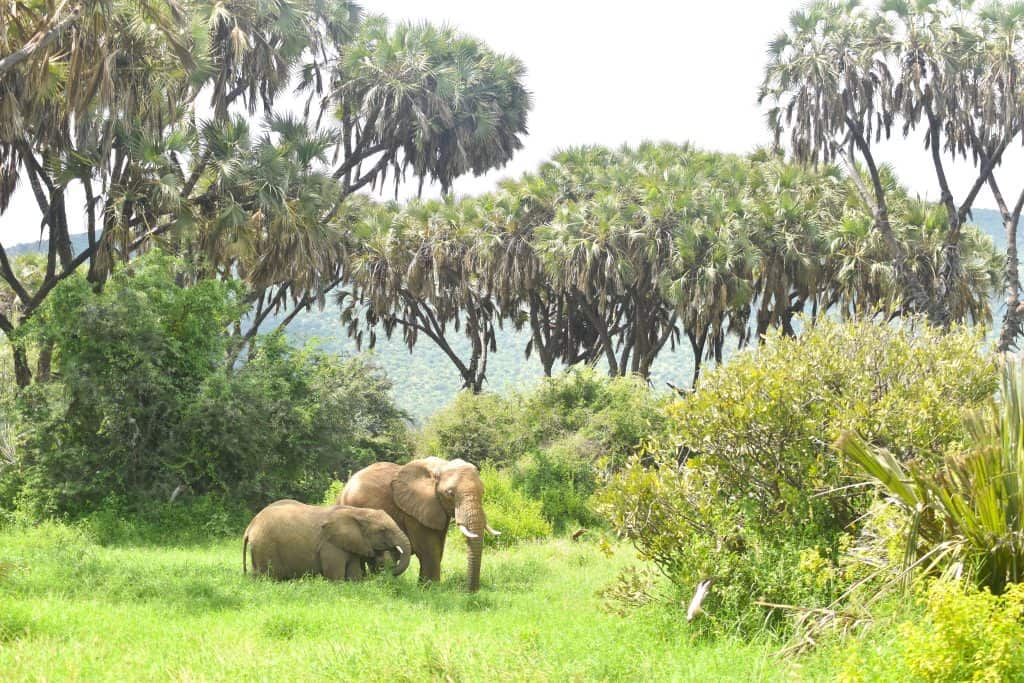
During the wet season is where I’ve seen my largest herd of elephant in Samburu, as they often congregate to feast on the new grass.
Tsavo Through the Seasons
Tsavo East and West, alongside the many conservancies, make up Kenya’s largest protected ecosystem. The seasons here can be truly contrasting, but equally beautiful.
Wet seasons: Lush, dramatic, and teeming with birds. Though some of the more remote roads become hard to navigate. The rain is always welcome in Tsavo and helps to keep the dust subdued. A much more pleasant experience than the dry season, but it can be harder to spot the wildlife.
Dry seasons: Great elephant sightings in Tsavo East, and clearer views of the dramatic red-dust landscapes. Much of the wildlife will tend towards the Voi and Galana rivers, making it easier to spot them close to the roads.
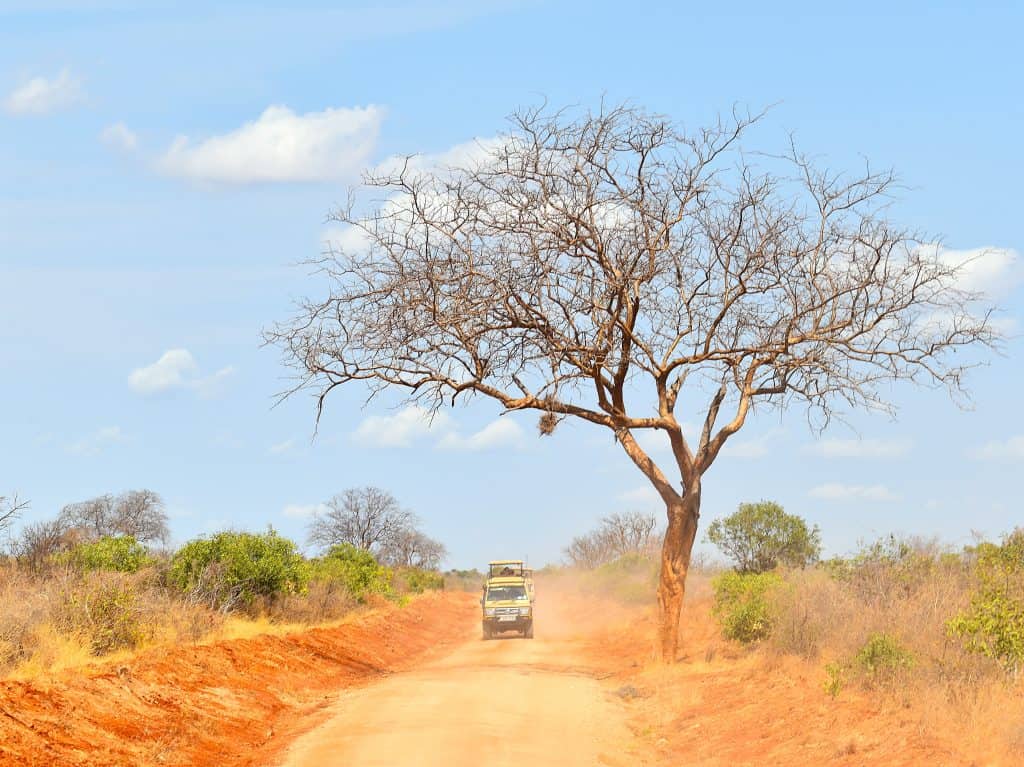
My Personal Recommendations
Dry Season: If it’s your first time, and you want that classic safari feel: dry season in the Mara is hard to beat. You may have to compete with the crowds, but the sightings you will get will make the cost and the crowds worth it!
Wet Season: If you are looking for something quieter and more intimate, or a little cheaper, then I would recommend you try Samburu. Ideally at the beginning or end of the rains, so March. end of May or November.
No matter when you go, Kenya rarely disappoints. The seasons shape the experience, but the weather never takes away the magic. Check out the other posts in my blog for the essential things to do before your Kenyan safari, as well as plenty of other advice I have to offer. As always, reach out to me with any questions. I’m always happy to help!
